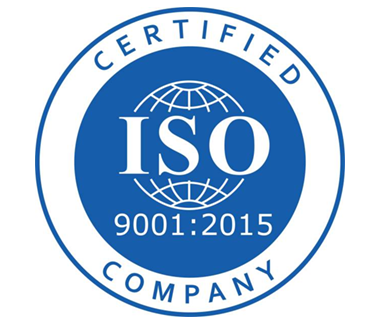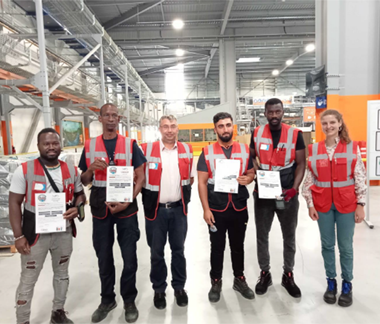A logistics warehouse : How does it work?
What is a logistics warehouse ?
A logistics warehouse is a platform where logistics flows are processed. There are differents types of warehouses that comply with strict safety regulations, which vary according to the nature of the activity. Various tasks can be carried out there :
> Reception of flows
> Product control and processing
> Management of products on pallets
> Preparation of goods : labelling, packaging, loading and unloading operations, etc.
Often organised by aisle or by zone, logistics warehouses must respect a strict organisation in order to optimise repartition of the employees’ in space and mouvements and shifts.
Generally speaking, logistics companies have a multitude of warehouses and various activities and solutions, which makes it impossible to apply a single model in terms of organisation. However, there are certain standards that apply everywhere, and this is what lean management is all about.
In logistics, lean management or continuous improvement is a management method that is regularly used to guarantee the optimisation of spaces and activities. It allows the warehouse to be structured as well as the organisation of activities.
Tasks such as sorting packages, assembling advertising material or picking in the context of order picking are divided into zones and optimised.
This has a direct impact on the company's growth strategy, as it is a direct improvement in productivity.
What is the size of a logistics warehouse?
Among the supply chain players, there are different sizes of warehouses, ranging from 5,000 m² to more than 50,000 m², in which various activities are carried out : parcel sorting, order preparation, inventories, etc.
Globally, we are seeing an evolution in trends in logistics warehouses. At a time when platforms larger than 30,000m² were increasingly being developed, the trend is now to install more moderate-sized platforms, on which mezzanines can be placed, thus making it possible to install several floors and to build the platform not so much in width as in height.
It should be noted that certain safety standards must be scrupulously respected when installing an activity within a logistics platform: emergency exits, fire extinguisher systems, first aid kits, etc.
Management of the logistics warehouse
Technically, for several years now, the players in the logistics chain have been increasingly implementing WMS, Warehouse Management Systems, or in other words, warehouse management software.
They enable real-time control of warehouse flows, stocks and movements. Processes are optimised to ensure the smooth running of the platform.
Depending on the WMS, the functionalities differ, but certain basic functionalities are systematically present, such as stock management and control, or entry and exit management.
The WMS saves considerable time for the teams, who no longer have to fill in various files but consolidate and centralise all the elements in a single software package.
At the beginning of the project, the logistics specialist expresses his or her needs according to the problems of his or her warehouse (stock management, flow management, supply, etc.) and a configuration is then set up according to the specificities and size of the operation.
Technological developments in logistics warehouses
Beyond the WMS, technologies are increasingly emerging in warehouses to facilitate movement, productivity or to improve the ergonomics of workstations.
Robotics is developing and many logistics companies are equipping themselves with AGVs (Automated Guided Vehicles) to automate and simplify repetitive tasks with low added value. These AGVs provide support to operators for certain tasks that can cause MSDs (Musculoskeletal Disorders).
As a result of these technological developments, orders or parcels are prepared or sorted more quickly, flow tracking is optimised, and warehouse exits are secured.
From RFID gates to mobile terminals and advanced sensors, technologies are making work methods more fluid and more in line with organisations, while allowing better traceability.
The logistics business, like the transport of goods, is constantly evolving, allowing better ergonomics and optimising productivity.







